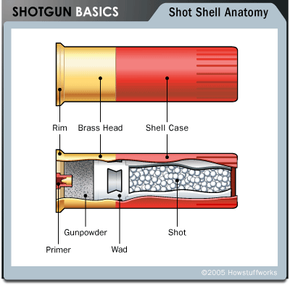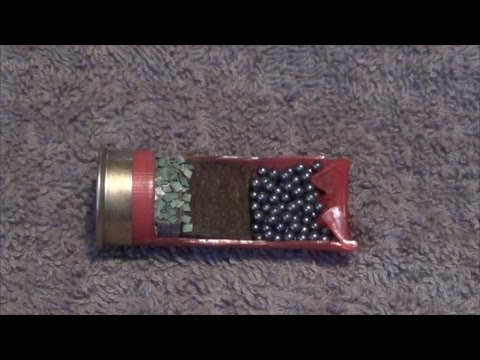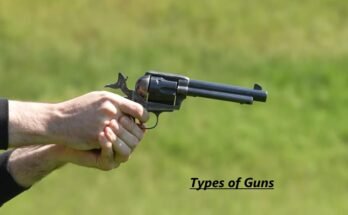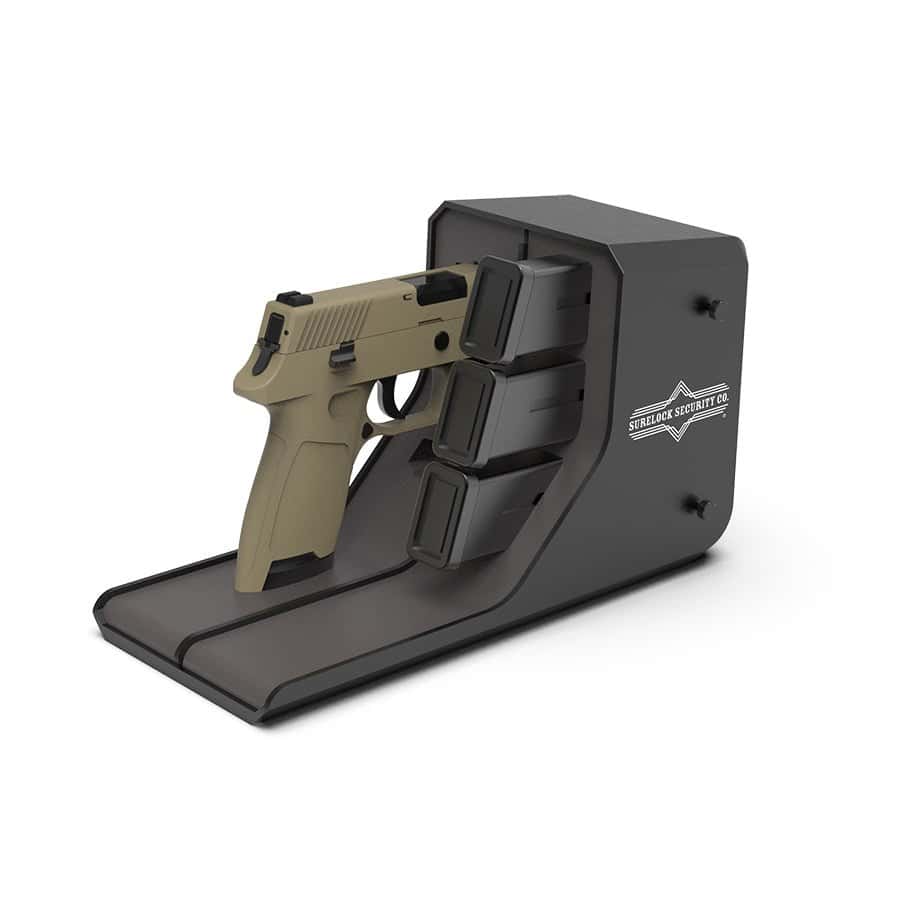Have you ever wondered what happens inside a shotgun when you pull the trigger? The mechanics of a shotgun bullet, or more accurately, a shotgun shell, might seem like a mystery.
But understanding how it works can be both fascinating and enlightening. Imagine being able to discuss the details of a shotgun shell with ease, impressing your friends with your newfound knowledge. This article will break down the process in simple, straightforward terms, so you can grasp the inner workings without needing a degree in physics.
Dive in to uncover the secrets behind the power and precision of shotgun shells, and satisfy your curiosity once and for all.

Shotgun Shell Components
Understanding how a shotgun bullet works begins with knowing its components. Each piece plays a vital role in the bullet’s performance, from the hull that holds everything together to the shot or slug that hits the target. Have you ever wondered what makes a shotgun shell tick? Let’s dive into the fascinating world of shotgun shell components and unravel their secrets.
Hull Structure
The hull is the outer casing of the shotgun shell. It’s made from plastic with a metal base, offering durability and strength. Picture it as a protective jacket, keeping all the inner parts snugly together.
Its design ensures the shell can withstand the pressures of firing. Next time you hold a shotgun shell, notice how robust it feels. It’s designed to handle explosive forces!
Primer Function
The primer is a small but crucial part of the shell. When you pull the trigger, the firing pin strikes the primer. This creates a spark that ignites the propellant charge.
Think of the primer as the starter of a car. Without it, the engine won’t roar to life. The primer’s spark is what initiates the action in a shotgun shell.
Propellant Charge
The propellant charge is the gunpowder that propels the shot or slug. Once ignited by the primer, it burns rapidly, producing gas that forces the projectile out of the barrel.
Consider the propellant charge as the fuel for your shotgun. Without it, the shell is just a fancy paperweight. The right amount of propellant ensures your shot reaches its target with precision.
Wad Purpose
The wad separates the propellant from the shot or slug. It acts like a buffer, cushioning the shot and controlling its spread as it exits the barrel.
Imagine the wad as a tiny airbag, protecting the projectile and ensuring it flies straight. The wad’s design can affect how the shot patterns, so it’s a crucial component in achieving accuracy.
Shot Or Slug
The final component is the shot or slug. Shotgun shells can contain multiple small pellets or a single large slug. Each serves a different purpose, depending on your needs.
Do you prefer hunting birds or larger game? Your choice of shot or slug can make all the difference. It’s the ultimate element that determines what your target will experience.
As you learn more about shotgun shells, consider how each component plays a role in your shooting experience. Does understanding these components change your perspective on the mechanics of shooting? Share your thoughts below!
Firing Process
The firing process in a shotgun is a fascinating sequence. Each step happens quickly. Understanding these steps helps in knowing how a shotgun works. From pulling the trigger to the bullet leaving the barrel, every action matters.
Trigger Mechanism
The process begins with the trigger mechanism. Pulling the trigger releases a small spring-loaded hammer. The hammer strikes the firing pin with force. This action is crucial for the next step.
Primer Ignition
Once the firing pin is struck, it hits the primer. The primer is a small component in the base of the shell. This impact causes a tiny explosion. It ignites the primer, which starts a chain reaction.
Powder Combustion
The primer ignition triggers powder combustion. The gunpowder inside the shell burns quickly. This creates gas and pressure. The pressure pushes the shot or bullet down the barrel. The bullet travels at high speed towards the target.
Projectile Dynamics
Understanding how a shotgun bullet works involves examining its projectile dynamics. The bullet’s design influences speed and trajectory. Upon firing, the bullet travels through the barrel, guided by internal forces, eventually hitting the target with precision.
Understanding the dynamics of a shotgun bullet can feel like unraveling a mystery. Each time you pull the trigger, a carefully orchestrated dance of physics unfolds. The heart of this lies in how the projectile behaves once it exits the barrel. This is the essence of projectile dynamics. Every shotgun shell is designed to produce a specific pattern of spread or trajectory. This influences how effective it will be in different scenarios, whether you’re hunting, shooting for sport, or using it for defense. Let’s dive deeper into the fascinating world of shotgun projectile dynamics.Shot Spread Pattern
When you fire a shotgun, what happens next is a spread of tiny pellets. This is known as the shot spread pattern. Picture it like a spray of tiny balls fanning out from the barrel. The spread pattern is influenced by several factors. The choke of the shotgun, the type of ammunition, and even the distance to the target all play a role. A tighter spread might be your best friend in competitive shooting, ensuring all your pellets hit the target. Have you ever wondered why hunters prefer a wider spread? It increases the chance of hitting a fast-moving target like a bird. Each decision you make about your shotgun setup can change the pattern significantly.Slug Trajectory
Switching gears to slugs, this is a whole different ball game. Unlike the scattered pellets, a slug is a single, solid projectile. Think of it like a heavyweight bullet with a direct path to the target. The trajectory of a slug is generally straighter, which makes it ideal for hitting a target at a longer range. However, the drop over distance is more pronounced than a rifle bullet. This means you need to consider the distance and aim higher for targets far away. Are you thinking about using slugs for hunting? They provide the power and accuracy needed for bigger game. But remember, understanding the slug’s trajectory is crucial for a successful shot. As you explore the dynamics of shotgun projectiles, remember that every choice affects the outcome. Each shot fired is a lesson in physics, and with practice, you can master the art of precision and power. What will you choose for your next shooting adventure?
Shotgun Types And Their Uses
Shotguns are versatile firearms with a rich history. They are favored for their power and simplicity. Understanding different shotgun types helps in choosing the right one. Each type has unique features and uses. Let’s explore various shotgun types and their uses.
Pump-action
Pump-action shotguns are popular for their reliability. They require manual cycling of the slide to eject and load shells. This manual operation offers better control over shooting. Hunters and law enforcement often use pump-action shotguns. Their design allows quick follow-up shots, making them effective in various situations.
Semi-automatic
Semi-automatic shotguns automatically reload after each shot. They use gas or recoil energy to cycle the action. This feature allows faster shooting compared to pump-action. They are preferred for sports shooting and hunting. Their efficiency and speed make them suitable for competitive settings.
Double-barrel
Double-barrel shotguns come in two styles: side-by-side and over-under. They offer two shots without reloading. Hunters favor them for their precision and simplicity. The dual-barrel design provides quick access to a second shot. They are often used in bird hunting and clay shooting sports.
Safety Considerations
Understanding shotgun bullet mechanics is vital for safe handling. Always prioritize safety by wearing protective gear. Keep the shotgun pointed in a safe direction to prevent accidents.
Safety considerations are crucial when handling and storing shotgun bullets. Ensuring safety not only protects you but also those around you. Understanding the importance of proper handling and storage can prevent accidents and ensure peace of mind.Proper Handling
When handling shotgun bullets, always treat them with respect. Imagine holding a live firecracker; it demands the same attention. Keep your fingers away from the trigger until you are ready to shoot. Never point the shotgun at anything you don’t intend to shoot. This simple rule can prevent many accidents. Also, ensure the muzzle is pointed in a safe direction at all times. Check the shotgun and ammunition to ensure they are compatible. Using the wrong ammo can lead to dangerous malfunctions. Regularly inspect your shotgun for any signs of wear or damage.Storage Guidelines
Storing shotgun bullets properly is as important as handling them safely. Keep them in a cool, dry place to maintain their condition. A locked cabinet or safe is ideal to prevent unauthorized access. Consider using a separate, locked container for ammunition. This adds an extra layer of safety. Always store ammunition and firearms separately if possible. Regularly check the condition of your stored ammunition. Look for any signs of corrosion or damage. If you find any, it’s safer to dispose of them properly and replace them. Have you ever considered how easy it is to overlook a small safety step? Taking a moment to double-check can prevent potential disasters. Implementing these safety measures ensures that your experience with shotgun bullets is both enjoyable and secure.
Shotgun Ammunition Variants
Shotgun ammunition is versatile, serving various purposes from hunting to defense. Understanding the different types of shotgun ammo can enhance your shooting experience. Each variant has distinct features that cater to specific needs. Let’s explore the main types of shotgun ammunition.
Birdshot
Birdshot is designed for hunting small game like birds. It contains many small pellets that spread widely. This wide spread increases the chance of hitting a moving target. Birdshot is less lethal over long distances due to smaller pellets. It’s ideal for hunting in open areas where precision is vital.
Buckshot
Buckshot is used for hunting larger game like deer. It contains larger pellets compared to birdshot. These larger pellets deliver more force upon impact. Buckshot is effective for short-range shooting. It’s also popular for self-defense due to its stopping power.
Slugs
Slugs are single, large projectiles fired from shotguns. They are designed for maximum accuracy over long distances. Slugs are ideal for hunting large game or precision shooting. They provide high impact and penetration power. Slugs are chosen for tasks requiring precise aim and control.
Frequently Asked Questions
What Is Inside A Shotgun Bullet?
A shotgun bullet, often called a shell, contains multiple small pellets. These pellets are packed in a casing with gunpowder. When fired, the gunpowder ignites, propelling the pellets towards the target. The spread of pellets increases the chance of hitting the target at close range.
How Does A Shotgun Bullet Spread?
Shotgun bullets spread due to the design of the shell. Upon firing, pellets disperse in a cone-shaped pattern. This pattern widens as the distance increases. The spread allows for greater coverage, making shotguns effective for hitting moving or multiple targets.
Why Do Shotguns Use Pellets?
Shotguns use pellets for increased hit probability. Multiple pellets enhance the chances of striking the target, especially at close range. This design is ideal for hunting and home defense. The spread provides greater accuracy over a wider area compared to single-projectile bullets.
How Does A Shotgun’s Choke Affect Spread?
A choke modifies the spread of a shotgun’s pellets. It constricts the barrel’s end, concentrating the pellets. This results in a tighter pattern and increases accuracy at longer ranges. Different choke types offer varying levels of pellet concentration, customizing the shotgun’s performance.
Conclusion
Understanding shotgun bullets helps in appreciating their function. Shotgun shells contain pellets. These pellets spread out when fired. This spread increases the chance of hitting a target. Shotguns are often used for hunting and sport shooting. Safety is vital when handling shotguns.
Proper knowledge ensures responsible usage. Always follow safety guidelines. Never point at anything you don’t intend to shoot. Remember, shotguns require practice to master. Learning about their components helps in safe handling. Explore more about shotguns to enhance your understanding.
Keep safety first, always.



